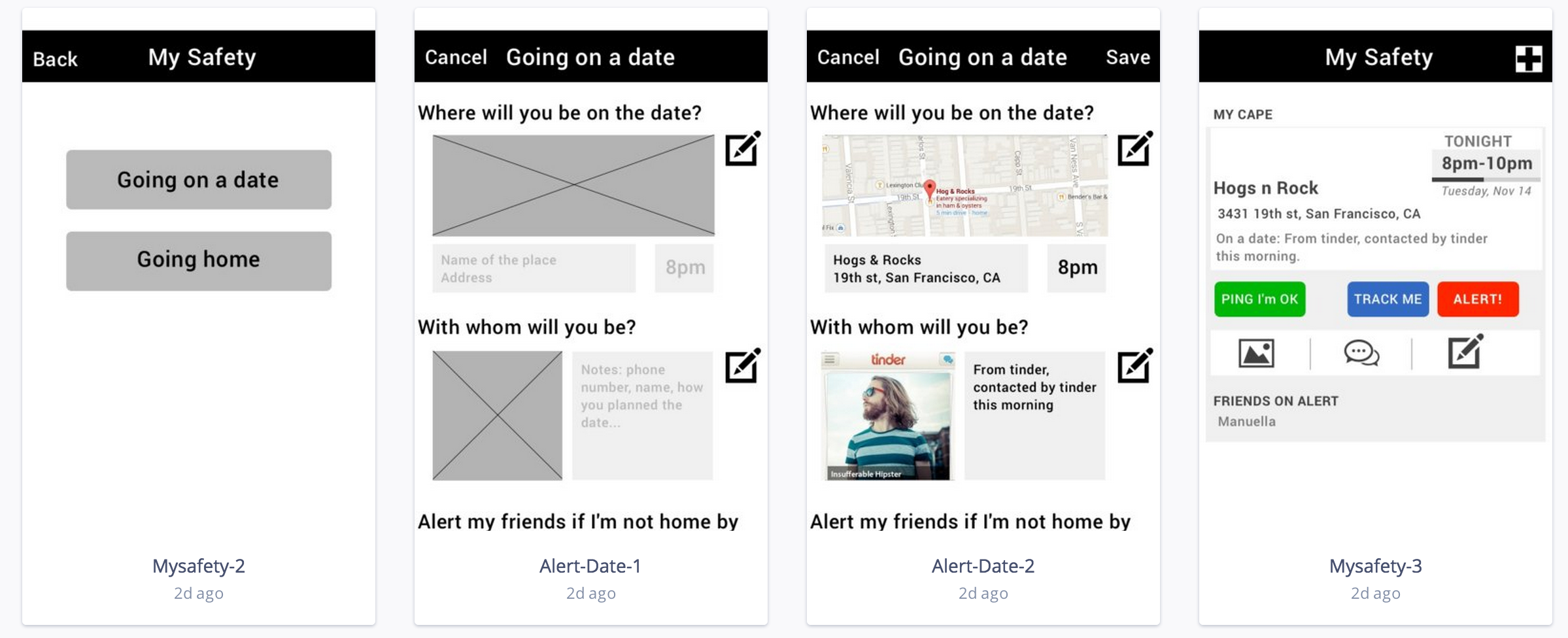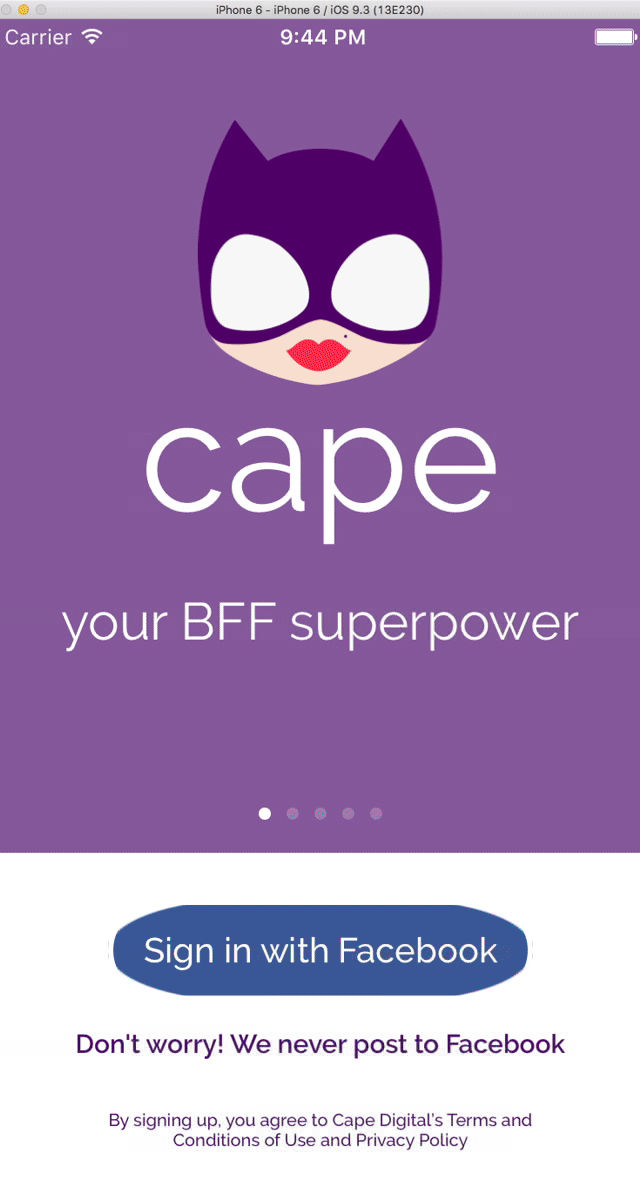Cape-BFF (Misberri)
A virtual BFF, a personal concierge and the social glue between female friendship groups.2015 - 2016
ROLEiOS Engineer & Product advisor
Cape was envisioned as an iOS MVP that helps women feel safer when going out by letting them share their location, define safe places, and notify trusted friends when going on dates. My role covered the full stack: mobile app development, backend API, and infrastructure setup.
Together with the client, we iterated on the product quickly, for instance with the addition of a chat feature.
iOS Application
I was responsible for the core functionality of the native iOS app:
- Safe place monitoring: implemented geofencing to detect when a user entered/exited safe places, and surfaced that status to friends.
- “Going on a date” flow: built the feature where users could log date info (location, time, person met, screenshots/notes) and select friends to be alerted if they didn’t return on time.
- User account & login: integrated Facebook SDK for login/signup and pulling profile data.
- Friends system : added ability to invite friends from Facebook/phonebook, manage friend lists, and display their safety status in real time.
- Status & battery sharing: shared whether a user was “safe,” “out and about,” “on a date,” or “off the grid,” with device battery level included.
- Notifications: integrated push notifications and background fetch to notify users about safety events and sync data.
Project proposal's wireframes
Anchoring a client’s ideas into a set of black&white, simple wireframes is a required step to start a project.
Backend Architecture
I also designed and implemented the backend API that powered the app:
- RESTful JSON API: built with Rails API + Postgres for user, friend, and safe place management.
- Data synchronization: with Core Data on the iOS side, ensuring device-to-server sync.
- Push notification service: for safety alerts and background refresh.
- Authentication: using Facebook tokens, with provisions for future role-based access.
- Deployment & infrastructure: set up backend on Heroku with SSL/TLS support and scalable architecture.
Cape-BFF
Client tested the app with a small group of friends.
The app was iteratively updated with supporting features, such as “going on a date.” A user could notify a friend ahead of time (commonly done through text messages when meeting a stranger) and share updates during the date. The chat functionality let the user quickly tap an icon to share her current status.
Key Technical Challenges
1. Geofencing & Localization
One of the most complex issues was determining whether a user was truly “safe” once they reached one of their safe places, like their home. The product goal was to consider someone safe only once they crossed their apartment door. Unfortunately:
- GPS and geofencing are not precise enough at that granularity—signal drift can easily place someone on the wrong side of the threshold.
- We experimented with different geofencing radius settings and built heuristics to decide if a user was inside or outside their safe zone.
- Despite these efforts, accuracy was inconsistent, especially in urban environments with weak GPS or multipath interference.
- For a safety app, this ambiguity was critical: false positives (“you’re safe when you’re not”) or false negatives (“you’re unsafe when you’re fine”) both broke trust.
This became a strong lesson in the limits of consumer-grade location technology when used for safety-critical use cases.
2. Battery & Continuous Signaling
Another challenge was ensuring the app continued to report location and safety status reliably when the device battery was low:
- Background location services and push notifications were implemented, but iOS aggressively limits activity when the device approaches low power states.
- The app needed to signal proactively when the phone was about to die, so friends would know not to expect further updates.
After the technical project handover, the client team extended this system with a websocket-based live signaling layer, improving real-time reliability across devices.
Conclusion
While the MVP successfully demonstrated core safety features — such as geofencing, status sharing, and the “going on a date” flow — the client was unable to secure long-term funding. As a result, the product never went to market and does not exist on the app stores today.

